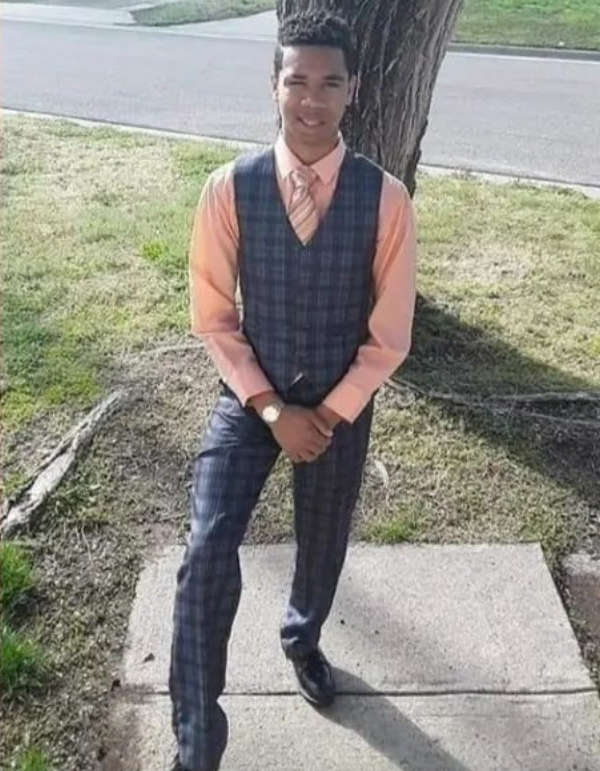No Charges to be Filed for Cedric Lofton’s Death
On Sept. 26, 2021, Cedric Lofton died after being restrained by correctional officers in a juvenile detention center in Wichita, Kansas. Sedgwick County District Attorney Marc Bennett refrained from filing charges against the officers involved, as they were acting in “self-defense” and were immune to prosecution under Kansas’ stand-your-ground laws. Not only should the officers be held accountable for Lofton’s death, as they put him in the position that killed him, but the Kansas self-defense laws must be reviewed for excessive leniency.
On Sept. 24, Cedric was taken into custody for “exhibiting erratic and aggressive behavior” towards his foster family. He was taken to a juvenile center and fought with the correctional officers holding him. He was restrained by the ankles, flipped onto his stomach and restrained by his wrists behind his back. He went unconscious, and a few minutes later, officers were unable to find a pulse. He was pronounced dead in the hospital two days later. The autopsy reported the cause of death as “complications of cardiopulmonary arrest sustained after physical struggle while restrained in the prone position.”
Andrew Stroth, the attorney representing Lofton’s biological family, said that the “prone” position officers put Lofton in “basically took Cedric’s breath away and killed him.” Bennett argued that the officers acted in self-defense by restraining Lofton in this way, but Stroth argued that Lofton could not have been a true threat to the officers: he was unarmed and only 135 pounds compared to several larger, older, armed officers, and could not have reasonably hurt them in the way they did him.
Kansas state law outlines the permission to use deadly force in self-defense for a law enforcement officer as follows: “such officer is justified in using deadly force only when such officer reasonably believes that such force is necessary to prevent death or great bodily harm to such officer or another person.”
Under this law, Lofton would have needed to be such a threat that the officers believed they would’ve sustained great bodily harm, would have needed to try to escape, would have needed to have committed a felony involving death or great bodily harm and would have had to indicate that he would endanger human life. The officers could not have reasonably believed that they would’ve sustained great bodily harm from a much smaller, unarmed teenager. Lofton did fight with the officers, like many do during arrest, so the officers could have believed he was trying to escape.
However, while Lofton exhibited “aggressive” behavior towards his foster family, there was no mention of a deadly weapon nor potential to cause death or bodily harm, and it is unlikely he could have indicated that he could reasonably endanger the lives of the officers when put in such a prone position. Under these conditions, the officers could be held responsible for Lofton’s death.
Officers’ jobs are to handle these kinds of situations, and they should expect some resistance during arrest. Another issue in this situation is that the officers should have been trained to control the situation in a safe manner; either the officers were not trained to do so or impulsively restrained Lofton in a dangerous way. At the very least, the officers should be charged with endangerment which is outlined in Kansas as “recklessly exposing another person to a danger of great bodily harm or death.” Lofton’s autopsy explained that it was the “prone position” that induced cardiac arrest. While it is subjective whether or not the officers meet the conditions for using deadly force in self-defense, it is clear that they put him in the position that killed him. Therefore, they exposed Lofton to death and should be charged with endangerment.
In looking into Kansas’ self-defense laws, I found that the conditions necessary to use deadly force in defense are very limited. For example, a civilian is allowed to use deadly force in self-defense “if such person reasonably believes that such use of deadly force is necessary to prevent imminent death or great bodily harm to such person or a third person.” The conditions for law enforcement to use deadly force in self-defense include some objective requirements, like if the person has committed a felony involving death or great bodily harm. However, the requirements for civilians to be permitted to use deadly force free from prosecution are solely subjective as the law states they must “reasonably believe” that the use of deadly force is necessary. What “reasonable” means will vary from person to person and judge to judge, allowing for people to get hurt or even killed because of what one person deems reasonable. Not to mention, racial and other biases may play into one’s fear of death or great bodily harm and, therefore, affect their self-defense method. Ultimately, Kansas law needs to be revised to include more objective markers upon which to decide whether someone can be charged for hurting someone in self-defense.
Ava Knight, FCRH ’25, is a neuroscience major from Seattle, Wash.










































































































































































































